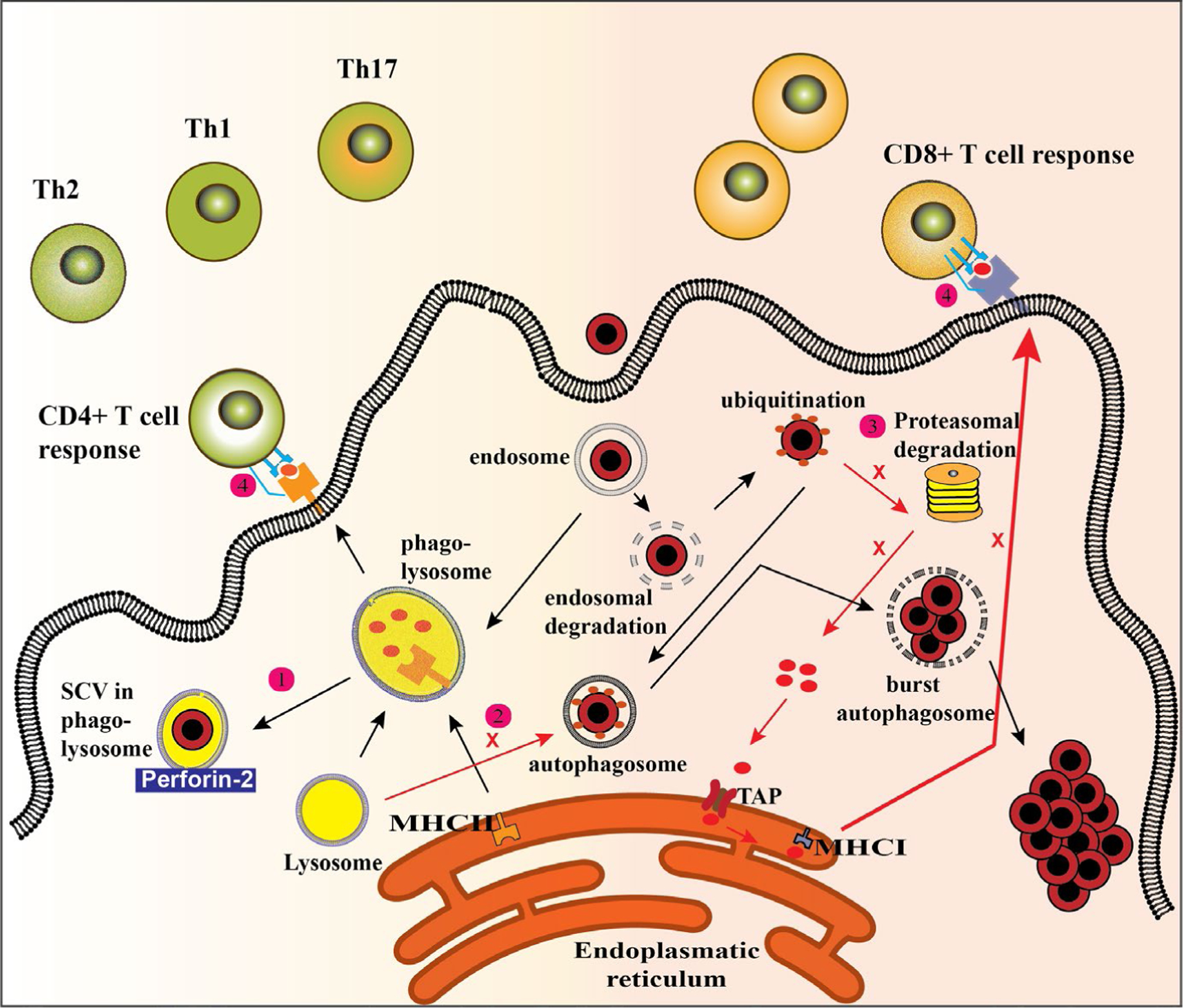FIGURE 2.

Activation of different T-cell populations through different pathways of antigen presentation. After host cell internalization, Staphylococcus aureus generally route through the phagosomal degradation pathway that, under normal circumstances, terminates into a highly degradative organelle with a low pH, the phagolysosome. 1) To circumvent lysosomal degradation, S. aureus can adapt to a low pH tolerant small colony variants (SCV)-like phenotype. 2) Staphylococcus aureus can also hide in autophagosomes where it prevents fusion with lysosomes preventing degradation and presentation on major histocompatibility complex (MHC) class II molecules. 3) Staphylococcus aureus that end up in the cytosol are ubiquitinated but not targeted for proteasomal degradation and subsequent MHC class I presentation escaping a cytotoxic T-cell response. 4) Staphylococcus aureus can also manipulate the expression of co-stimulatory molecules preventing an effective T-cell response
